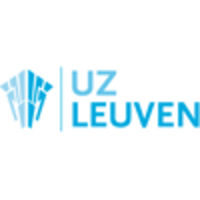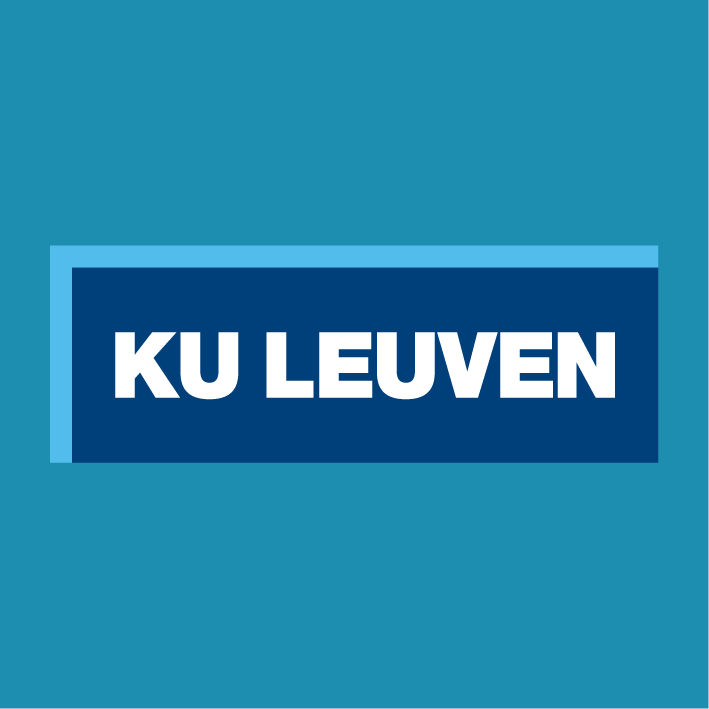预约演示
更新于:2025-11-27
Clioquinol
氯碘羟喹
更新于:2025-11-27
概要
基本信息
原研机构 |
非在研机构- |
权益机构- |
最高研发阶段批准上市 |
首次获批日期- |
最高研发阶段(中国)批准上市 |
特殊审评- |
登录后查看时间轴
结构/序列
分子式C9H5ClINO |
InChIKeyQCDFBFJGMNKBDO-UHFFFAOYSA-N |
CAS号130-26-7 |
关联
5
项与 氯碘羟喹 相关的临床试验CTIS2024-511388-27-04
Add-on Clioquinol in drug-resistant epilepsy: an exploratory study
开始日期2024-07-16 |
申办/合作机构 |
NCT05727943
Add-on Clioquinol in Drug-resistant Childhood Epilepsy: an Exploratory Study
In this exploratory trial, the potential anti-seizure activity of clioquinol in a small cohort of adolescents with drug-resistant epilepsy will be examined. Subjects will be exposed to clioquinol add-on for a period of maximum 8 weeks (2 weeks low dose, 6 weeks higher dose). The main hypothesis of the study is that 30% of the included subjects will be responders and that the median seizure frequency reduction will be at least 30%.
开始日期2022-03-01 |
ChiCTR2000034813
A randomized, double-blind, placebo-controlled, clinical study evaluating the efficacy and safety of Clioquinol cream in the treatment of balanoposthitis
开始日期2020-07-30 |
申办/合作机构 中国医科大学附属第一医院 [+1] |
100 项与 氯碘羟喹 相关的临床结果
登录后查看更多信息
100 项与 氯碘羟喹 相关的转化医学
登录后查看更多信息
100 项与 氯碘羟喹 相关的专利(医药)
登录后查看更多信息
1,334
项与 氯碘羟喹 相关的文献(医药)2025-12-01·FREE RADICAL BIOLOGY AND MEDICINE
Deciphering the rules of disulfidptosis: a genome-wide signature for identifying disulfidptosis-related genes and analyzing hepatocellular carcinoma chemotherapy sensitivities
Article
作者: Xu, Jiayi ; Wang, Gang ; He, Wenxi ; Yan, Liangwen ; Liu, Pengfei ; Shi, Mengjiao ; Liu, Rongrong ; Li, Hao ; Zhang, Yinggang ; Guo, Ying ; Li, Xinyan ; Zhao, Yaping ; Feng, Zhaode ; Zhang, Yi ; Hu, Kailing
Disulfidptosis, a novel form of regulated cell death (RCD), represents a promising strategy for cancer therapy. However, identifying its regulators remains a key challenge. In this study, we constructed a genome-wide disulfidptosis signature (DS) model using known regulators and large-scale human gene expression data comprising 1454 studies and 272,445 samples. This model predicted disulfidptosis propensity across 33 cancer types and highlighted DS differences across tissues and organs. Functional analysis focused on the top 1 % of high-DS and low-DS genes, revealing their sensitivity to perturbations through simulated overexpression and knockout experiments. In hepatocellular carcinoma (HCC), NRF1 and NRF2 were identified as key disulfidptosis regulators, functioning as a desensitizer and sensitizer, respectively, as validated through gene knockouts, cellular morphology, and functional analyses. Additionally, the ketogenic diet significantly increased cellular sensitivity to disulfidptosis under glucose starvation by promoting metabolic adaptation. Using network pharmacology, small-molecule compounds influencing disulfidptosis were identified. Among these, NR-CL was validated as a disulfidptosis desensitizer, while lomerizine and clioquinol were confirmed as sensitizers through gene expression predictive analyses and cellular functional validation. These findings lay a robust foundation for uncovering novel regulatory mechanisms of disulfidptosis and provide practical strategies for enhancing cancer chemotherapy through targeted interventions.
2025-11-01·EUROPEAN JOURNAL OF PHARMACOLOGY
Repurposing antimicrobials, disulfiram, and metformin for cancer therapy: Bridging mechanistic gaps through RNA sequencing
Review
作者: Hassan, Siti Nazihahasma ; Ahmad, Farizan
This review focuses on antimicrobials (azithromycin, clarithromycin, clioquinol, chloroquine, doxycycline, erythromycin, ivermectin, and tigecycline), disulfiram, and metformin. It aims to highlight key knowledge gaps and the role of RNA sequencing in the translational repurposing of these agents for cancer therapy. Among the selected repurposed candidates, metformin is distinguished by an abundance of preclinical and clinical studies. Its anticancer activity is partly attributed to the induction of multiple regulated cell death pathways, including apoptosis, pyroptosis, necroptosis, and ferroptosis, alongside transcriptomic changes identified by bulk RNA sequencing across different cancer types. Clinical translation has thus far yielded mixed results, with drug-drug interactions, subtherapeutic concentrations, resistance mechanisms, and components of the tumour microenvironment representing key challenges to be addressed. In future, transcriptomics-guided drug repurposing, which enables patient stratification, together with the strategic use of repurposed agents informed by predictive biomarkers, may improve clinical outcomes. Bulk RNA sequencing provides a cost-effective means to assess drug-induced global gene expression changes, whilst single-cell and spatial transcriptomics offer finer resolution by capturing cell-type-specific responses and stromal influences, thereby enhancing precision in therapeutic targeting.
2025-10-01·FREE RADICAL BIOLOGY AND MEDICINE
Deciphering the anti-senescent effects of Clioquinol: Lifespan prolongation, metabolic homeostasis, and phenotypic rehabilitation in Drosophila melanogaster
Article
作者: Zhang, Yu-Qi ; Wu, Meng-Zhen ; Liu, Yang ; Wang, Meng-Hao ; Liu, Xiao-Meng ; Li, Bing ; Liu, Xu-Dong ; Zhang, Yun-Xia ; Shi, Ying-Xin ; Lv, Lu-Wei ; Liu, Yu-Tong ; Ren, Qin
Clioquinol (CQ), a halogenated 8-hydroxyquinoline, was once an oral antiparasitic for intestinal amoebiasis in the 1950s-1970s but was withdrawn due to neurotoxicity. Lately, it shows activities beyond antimicrobials, like in osteoarthritis and neurodegenerative diseases, yet its anti-aging effects are unclear. This study used Drosophila melanogaster to test CQ's effects on healthy aging and age-related diseases. Results showed CQ extended lifespan in normal or high-fat diet flies, enhanced stress resistance and glycolipid metabolism, improved motility, and prevented intestinal inflammation and obesity, and alleviated age-related digestive decline. In addition, CQ also prolonged lifespan and improved motor activity in Alzheimer's flies. Gene-deficient lifespan experiments and transcriptomic analysis revealed CQ's anti-aging mechanisms involving multiple signaling pathways, such as differential gene expression in HIF-1 signaling, Notch signaling, P53 signaling, JAK-STAT signaling, FOXO signaling, and IL-17 signaling pathway, activated TNF signaling and PI3K-Akt signaling pathway, and inhibited mTOR signaling pathway. Overall, CQ shows promise as a candidate for anti-aging interventions and treating aging-related diseases.
4
项与 氯碘羟喹 相关的新闻(医药)2025-02-07
·生物世界
编辑丨王多鱼
排版丨水成文
铁、锰、铜、锌等金属离子作为必需的微量营养素,在大脑中广泛的生理过程中都是必需的。然而,金属离子失衡(无论是过量还是不足)都是有害的,可通过氧化应激、铁死亡、铜死亡、细胞衰老或神经炎症等方式导致神经元死亡,参与神经退行性疾病的病理机制。
2025年2月3日,青岛大学谢俊霞团队在 Signal Transduction and Targeted Therapy 期刊发表了题为:Homeostasis and metabolism of iron and other metal ions in neurodegenerative diseases 的综述论文。
该论文综述了金属离子(铁、锰、铜、锌)在神经退行性疾病(帕金森病、阿尔茨海默病、渐冻症和亨廷顿病)中的研究历史、上游调节因子、下游效应物及其在生理和病理条件下的相互作用,并讨论了金属离子螯合剂在治疗神经退行性疾病中的疗效。
自1924年首次在帕金森病(PD)患者的大脑中观察到铁沉积以来,铁失调与神经退行性疾病的关系引起了广泛关注。
其他金属离子(例如锰、铜、锌)也参与了神经退行性疾病的发展,增加了疾病风险或促进了病理蛋白的聚集。铁死亡和铜死亡等金属离子依赖的细胞死亡形式的发现,为神经退行性疾病提供了新的病理机制。
铁和其他金属离子在神经退行性疾病中的研究时间表和里程碑事件
铁和其它金属离子的下游效应物
铁是氧运输、DNA 合成、线粒体呼吸和磷脂合成的必需元素。铁的稳态由多种蛋白质和分子机制调控,包括吸收、储存和释放过程。
锰是多种酶的辅助因子,参与维持中枢神经系统的正常生理功能。锰的摄取和排出受到严格调控。
铜是多种酶的辅助因子,参与呼吸功能和抗氧化防御。铜的摄取、排出和分布由膜相关铜转运蛋白调控。
锌在免疫系统、酶功能和神经保护中起重要作用。锌的浓度由金属硫蛋白、锌转运蛋白和Zrt/LRT 样蛋白严格调控。
氧化应激:铁和铜可以促进芬顿反应,生成有害的活性氧(ROS),引发氧化应激,导致细胞膜、蛋白质和核酸的损伤。
铁死亡:铁死亡是一种铁依赖的细胞死亡形式,其特征是铁积累、谷胱甘肽耗竭和脂质过氧化。
铜死亡:铜死亡是一种依赖铜和线粒体呼吸的细胞死亡形式,铜直接与三羧酸循环中的脂酰化成分结合,导致脂酰化蛋白聚集和铁硫簇蛋白的丢失。
细胞衰老:铁、锰、铜和锌等金属离子的过量积累可以诱导细胞衰老,表现为细胞增殖、分化或生理功能的逐渐下降。
神经炎症:金属离子(例如铁、锰、铜、锌)可以激活小胶质细胞和星形胶质细胞,促进促炎细胞因子的释放,引发神经炎症。
金属离子失调在神经退行性疾病中的作用和机制
脑区金属离子重新分布:在帕金森病、阿尔茨海默病、渐冻症和亨廷顿病患者中,特定脑区的铁水平显著升高,且与疾病严重程度密切相关。
细胞铁失调:在帕金森病、阿尔茨海默病、渐冻症和亨廷顿病患者中,神经元、小胶质细胞、星形胶质细胞和少突胶质细胞中的铁代谢失调,导致铁积累和神经元死亡。
在帕金森病(PD)状态下不同细胞中出现铁失调
帕金森病患者溶酶体和线粒体中铁代谢失调
其他金属离子的失调:锰、铜和锌的失调也参与了神经退行性疾病的发展,增加了疾病风险或促进了病理蛋白的聚集。
神经退行性疾病中金属离子失调与病理性蛋白质之间的相互作用
靶向金属离子的治疗策略
金属螯合剂:金属螯合剂(例如去铁胺、氯碘羟喹、去铁酮等)通过螯合金属离子,减少氧化应激和病理蛋白聚集,显示出治疗神经退行性疾病的潜力。
天然化合物及其衍生物:许多天然化合物(例如槲皮素、姜黄素、表没食子儿茶素没食子酸酯等)具有金属螯合和抗氧化作用,显示出神经保护作用。
临床试验:一些金属螯合剂(如去铁酮、PBT2等)在临床试验中显示出一定的疗效,但仍需进一步研究以验证其安全性和有效性。
金属离子(尤其是铁)的失调在神经退行性疾病的病理进展中起重要作用,是预防和治疗这些疾病的潜在靶点。
进一步研究金属离子在不同脑区、细胞和细胞器中的分布及其相互作用,将有助于全面理解其在神经退行性疾病中的作用。
开发更灵敏的生物化学和分子生物学技术,结合高灵敏度的MRI成像,将有助于早期诊断和监测神经退行性疾病。
这篇论文为理解金属离子在神经退行性疾病中的作用提供了全面综述,并为开发针对金属离子的治疗策略提供了新视角。
论文链接:
https://www.nature.com/articles/s41392-024-02071-0
设置星标,不错过精彩推文
开放转载
欢迎转发到朋友圈和微信群
微信加群
为促进前沿研究的传播和交流,我们组建了多个专业交流群,长按下方二维码,即可添加小编微信进群,由于申请人数较多,添加微信时请备注:学校/专业/姓名,如果是PI/教授,还请注明。
点在看,传递你的品味
2025-02-03
·药智网
纳米药物递送系统在突破血脑屏障方面已经取得了令人瞩目的临床研究成果,为中枢神经系统疾病的治疗带来了前所未有的希望。
从对抗致命的脑肿瘤,到攻克棘手的神经退行性疾病,如阿尔茨海默病等,纳米技术就像一位神奇的“魔术师”,让原本难以触及病灶的药物得以精准送达,显著提升了治疗效果,为无数患者点亮了康复的曙光。
1
大脑的“守护盾”
在我们探索纳米技术如何助力药物突破血脑屏障之前,先来认识一下这个大脑的“守护盾”究竟是什么。
血脑屏障,简单来说,是大脑毛细血管壁与神经胶质细胞形成的血浆与脑细胞之间的屏障,以及由脉络丛形成的血浆和脑脊液之间的屏障。它就像一位忠诚而严格的“卫士”,主要结构包括脑部连续毛细血管内皮、细胞间紧密连接、完整基膜、周细胞和星形胶质细胞脚板组成的神经胶质膜。
图片来源:参考文献3
从功能上看,血脑屏障具有极其重要的双重作用。一方面,它是大脑的“营养通道”,能够精准地将氧气、小分子物质、脂溶性物质等运输至大脑,确保大脑拥有充足的能量供应,维持正常运转;另一方面,它更是一道坚不可摧的“防线”,可以有效阻止血液中的有害物质,如细菌、病毒、毒素以及大部分药物分子等入侵大脑,为脑组织营造一个稳定、安全的内环境。打个比方,如果把大脑比作一座珍贵的城堡,那么血脑屏障就是城堡周围那高耸厚实的城墙,抵御着外界的种种“侵袭”。
然而,当大脑不幸患上疾病,需要药物来“救场”时,血脑屏障却成了一道棘手的难题。由于其高度选择性,绝大多数小分子和大分子药物,像多肽、蛋白质、核酸类药物等,都被无情地挡在了门外。这就好比城堡内发生了危机,救援物资却难以送达,严重限制了中枢神经系统疾病,如神经退行性疾病、脑肿瘤、脑部感染和中风等的治疗效果,让医学研究者们头疼不已。
2
破局之钥
在与血脑屏障的这场“较量”中,纳米技术为药物递送带来了全新的曙光。纳米,作为一个极小的长度单位,1纳米等于十亿分之一米,在这样的微观尺度下,物质展现出了许多独特的性质。
纳米药物递送系统具备诸多优势,使其成为突破血脑屏障的有力候选。一方面,纳米级别的尺寸让药物载体能够轻松穿越一些常规药物难以通过的生理屏障,就如同让药物搭乘上了一艘艘“微型潜艇”,可以巧妙地避开血脑屏障的“拦截”;另一方面,通过对纳米载体表面进行精细修饰,能够赋予其靶向性,使其如同安装了精准的“导航系统”,可以精准地识别并结合血脑屏障上特定的受体或转运体,从而实现药物的主动跨膜转运,将药物高效且精准地送达大脑病灶部位。此外,纳米载体还能够实现药物的缓释,让药物在体内缓慢、持续地释放,既保证了药物浓度的稳定,又减少了频繁给药给患者带来的痛苦,可谓一举多得。
纳米颗粒靶向递送,抗击脑肿瘤
在脑肿瘤治疗领域,纳米技术带来了令人振奋的突破。纪念斯隆・凯特琳癌症中心的研究人员展开了一项极具创新性的研究,他们将目光聚焦于髓母细胞瘤,这一最常见的儿童恶性脑肿瘤,约占儿童所有脑肿瘤的20%,因其高度侵袭性,近30%的患者甚至被认为无药可治。
研究团队巧妙地利用了人体免疫系统在应对病原体感染时的归巢机制。他们发现,脑肿瘤中的血管内皮细胞会表达P-选择素,而这种P-选择素在正常大脑组织中几乎不表达。基于此,他们开发了靶向P-选择素的岩藻多糖-纳米颗粒,这一纳米载体宛如一位精准的“快递员”,携带抗癌药物Vismodegib,能够主动且高效地突破血脑屏障,直奔脑肿瘤组织,而不会对正常大脑组织造成干扰。
在小鼠模型实验中,结果令人鼓舞。装载Vismodegib的岩藻多糖-纳米颗粒(简称FiVi)展现出了强大的抗肿瘤效果,即便在低剂量下,也能显著抑制肿瘤生长,同时极大地减弱了药物原本可能带来的骨毒性,为患儿带来了新的希望。不仅如此,研究人员还发现,辅助以极低剂量的放疗,能够进一步促进内皮细胞的P-选择素表达水平,就像是为这位“快递员”开辟了一条更加顺畅的“绿色通道”,让药物递送更加高效,进一步增强治疗效果。这一研究成果无疑为脑肿瘤治疗开辟了一条全新的道路,有望改善儿童和成人的各类脑肿瘤治疗现状。
球形核酸药物,精准打击肿瘤细胞
美国西北大学的研究团队在胶质母细胞瘤治疗方面取得了重大进展。胶质母细胞瘤作为一种恶性脑瘤,复发率极高,患者预后极差,五年生存率不到5%,而血脑屏障的存在更是让药物开发困难重重。
为了攻克这一难题,研究人员独辟蹊径,开发出了一种球形核酸药物(spherical nucleic acid,SNA)。这种药物由核心的Au纳米颗粒与靶向Bcl2L12的小干扰RNA共价结合而成,Bcl2L12是胶质母细胞瘤的一个致癌基因,就如同给药物装上了精准的“制导系统”。令人惊喜的是,这种球形核酸药物能够在静脉注射全身给药后,成功穿越血脑屏障,精准地靶向Bcl2L12并下调其表达,进而促进肿瘤细胞的死亡。
研究人员先是在食蟹猴中进行了严谨的毒理学研究,确定了无明显损害作用水平(NOAEL)为8 mg/kg,为后续人体试验奠定了安全基础。随后,他们在西北大学Robert H.Lurie综合癌症中心的8例复发性胶质母细胞瘤患者中开展了单臂、开放标签的0期临床试验(NCT03020017)。患者在接受静脉注射药物治疗后,手术切除肿瘤,用于深入分析药物穿越血脑屏障的过程以及对肿瘤细胞的影响。
安全性方面,试验中没有出现4或5级临床相关不良事件,仅发现了两个严重不良事件:低磷血症和淋巴细胞减少症,且都在可控范围内。在肿瘤标本分析中,研究人员发现,在所有分析的肿瘤标本(8例中的6例)中均可检测到Au,在血管周围和肿瘤实质区域,Au积累在肿瘤相关内皮细胞中,并被肿瘤相关巨噬细胞和Ki67阳性肿瘤细胞所吸收,这充分证明了药物成功抵达肿瘤部位并发挥作用。与未经治疗的原发性肿瘤相比,8例复发患者中的4例表现出Bcl2L12蛋白的显著下调,而且Bcl2L12蛋白在肿瘤复发期间没有显著变化。
此外,治疗后患者肿瘤细胞也表现出了caspase-3活化的增强和野生型p53蛋白表达的增加,这些都表明肿瘤细胞正朝着凋亡的方向发展。这一研究首次证实了球形核酸药物具有突破人体血脑屏障并杀伤肿瘤细胞的作用,为胶质母细胞瘤及其他神经系统疾病的治疗带来了革命性的曙光。
“三重相互作用”聚合siRNA纳米药物,巧妙渗透
南开大学薛雪团队致力于开发针对阿尔茨海默病的纳米药物。经过不懈努力,他们开发出了一种半乳糖修饰的“三重相互作用”稳定的聚合siRNA纳米药物,为药物穿透血脑屏障提供了一种巧妙的策略。
这种纳米药物利用禁食和补充葡萄糖控制血糖变化这一生物策略,触发脑血管内皮细胞上的葡萄糖转运蛋白1(Glut1)循环。Glut1就像是血脑屏障上的一个“秘密通道”,它能够特异性识别聚合siRNA纳米药物,通过转运蛋白介导的胞吞作用,使聚合siRNA纳米药物从脑血管内皮细胞腔面迁移到基底面,从而实现高效的血脑屏障穿透。
为了进一步提高药物的递送效率,研究团队还精心为药物增加了伪装。他们把聚合siRNA纳米药物伪装成红细胞膜,让血脑屏障的“守卫”难以察觉,从而提高了药物的通过效率。研究表明,聚合siRNA纳米药物具有良好的血液稳定性,可以通过血糖控制的Glut1介导的转运有效地穿透血脑屏障,并且在动物实验中展现出了对阿尔茨海默病的治疗潜力,有望为这一困扰全球众多患者的神经退行性疾病带来新的治疗希望。
人血清白蛋白纳米系统,为脑部疾病“开路”
天津大学常津教授团队另辟蹊径,从鼻腔给药这一独特途径入手,为药物绕开血脑屏障进入大脑找到了一条“捷径”。他们研发的人血清白蛋白药物递送纳米系统,选取了针对诱发阿尔茨海默病的可能因素,即金属离子聚集触发的Aβ淀粉样沉积和乙酰胆碱失衡的两种药物——氯碘羟喹和多奈哌齐,将它们装进由人血清白蛋白做成的纳米颗粒中。
为了让纳米颗粒顺利跨越鼻腔黏膜这道天然屏障并精准靶向治疗病灶,研究人员在纳米颗粒上添置了两种特别的“小装备”:一种是可跨越鼻黏膜的跨膜肽(TAT),它能够显著提高纳米颗粒跨过鼻黏膜的效率,使药物能更快更好地在脑内富集;另一种是靶向制剂神经节苷脂(GM1),它就像一个精准的“导航仪”,可以帮助已穿过鼻黏膜的药物快速聚集到脑内病变部位。
研究结果令人振奋,该纳米药物可显著提高治疗药物的入脑效率和脑内滞留能力。在阿尔茨海默病小鼠模型中,纳米药物展现出了出色的治疗效果,能够改善神经元形态学改变,挽救记忆障碍,减缓疾病的发病进程,为阿尔茨海默病及其他脑部疾病的治疗提供了一种极具前景的新方法。
3
结语
随着科技的飞速发展,科研人员有望开发出更加智能、高效的纳米载体,它们能够依据病灶部位的微环境变化,精准、智能地释放药物,进一步提高治疗效果;多模态联合治疗也将成为趋势,将纳米技术与基因治疗、免疫治疗等前沿疗法有机融合,为复杂的脑部疾病提供全方位、个性化的治疗方案;此外,随着对血脑屏障机制的深入理解,我们或许能够发现更多天然、安全的靶点,为纳米药物的设计开辟新的路径,从而加速纳米递药系统从实验室走向临床,真正造福广大患者,开启中枢神经系统疾病治疗的全新篇章。
参考文献
1.Tylawsky,D.E.,Kiguchi,H.,Vaynshteyn,J.et al.P-selectin-targeted nanocarriers induce active crossing of the blood–brain barrier via caveolin-1-dependent transcytosis.Nat.Mater.22,391–399(2023).https://doi.org/10.1038/s41563-023-01481-91
2.l.tang,y.yin,h.liu,m.zhu,y.cao,j.feng,c.fu,z.li,w.shu,j.gao,x.-j.liang,w.wang,blood–brainbarrier-penetratingandlesion-targetingnanoplatformsinspiredbythepathophysiologicalfeaturesforsynergisticischemicstrokes.
3.申杰,徐桂华。血脑屏障体外模型及相关实验方法的研究进展[J].中华神经医学杂志,2021,20(9):961-965
友情推荐:医药行业深度技术内容,点击“博药”查看详情~
声明:本内容仅用作医药行业信息传播,为作者独立观点,不代表药智网立场。如需转载,请务必注明文章作者和来源。对本文有异议或投诉,请联系maxuelian@yaozh.com。
责任编辑 | 史蒂文
合作、投稿、转载开白 | 马老师 18323856316(同微信)
阅读原文,是受欢迎的文章哦
核酸药物
2024-01-10
·医药地理
未经授权,不得转载8-羟基喹啉类选择性铜离子螯合剂的合成及其体外抗肿瘤活性Synthesis and in vitro Antitumor Activity of8-Hydroxyquinoline-based Selective Copper Chelators关颖祯1,何 燕2,刘 艳1,3*,MEUNIER Bernard 1,4(1. 广东工业大学轻工化工学院,广东广州 510006;2. 广东工业大学生物医药学院,广东广州 510006;3. 广东省植物资源生物炼制重点实验室,广东广州 510006;4. Lab. de Chimie de Coordination du CNRS,法国图卢兹 31400)摘要:肿瘤与人体内铜离子稳态失衡密切相关。为了开发高效低毒的新型铜离子螯合剂类抗肿瘤化合物,以2- 甲基-8-羟基喹啉为起始物,经过C-2 位羟醛缩合、消除反应、迈克尔加成等反应合成5 种8- 羟基喹啉衍生物。通过紫外滴定法研究目标化合物的铜离子螯合能力和选择性;通过MTT 法测定其对人黑色素瘤细胞(A375 细胞和Colo829 细胞)、人肺癌细胞(A549 细胞)、人肝癌细胞(HepG2 细胞)、人宫颈癌细胞(HeLa 细胞) 及人永生化角质形成细胞(HaCaT 细胞)的细胞毒性。最终,得到安全性高于阳性对照品氟尿嘧啶(5-FU) 的TDMQ51 和TDMQ53 这2 个化合物,对铜和锌的络合常数相差达13 个数量级,且对多种肿瘤细胞具有良好抑制活性,在提高抗肿瘤活性上具有改造潜力,可作为先导化合物进行深入研究。关键词:8- 羟基喹啉;体外抗肿瘤活性;铜离子螯合剂;选择性以下为文章节选肿瘤的发生发展与人体内铜离子代谢密切相关。患者体内肿瘤组织及血清中的铜离子显著升高,可促进血管生成、细胞增殖、肿瘤生长及转移[1]。喹啉衍生物作为铜离子螯合剂,通过阻断细胞周期、诱导细胞凋亡、抑制血管生长、阻止细胞迁移、激活免疫反应等多种机制,表现出良好的抗肿瘤效果[2]。其中,铜离子螯合剂氯碘羟喹和氯喹( 图1)曾作为抗肿瘤候选药物进入多项临床试验,因缺乏对铜离子的专一性,产生严重不良反应,已被淘汰。人体必需的金属元素有14 种,其中锌元素是人体内最丰富的非氧化还原活性金属离子,参与了体内接近25%的金属蛋白生理过程,发挥着物质转换和能量交换的作用[3—4]。由此可见,理想的铜离子螯合剂类抗肿瘤药物,对体内其他重要金属离子,尤其是锌离子,应不产生影响。因此,亟需新思路进行药物设计和结构优化,以获得低毒高效的苗头化合物。↑长按二维码阅读全文基金项目:国家自然科学基金项目(21977019)、广东省植物资源生物炼制重点实验室项目(2021B1212040011)、深圳市科技计划基金项目(2020N116)作者简介:关颖祯(1997—),女,硕士,从事新型铜离子螯合剂的合成以及作用机制研究。通信作者:刘 艳(1980—),女,教授,从事基于靶点的药物设计合成、药效评价和作用机制研究。E-mail:yanliu@gdut.edu.cn文章详情欢迎登录《中国医药工业杂志》官网查看。END如需获取更多数据洞察信息或公众号内容合作,请联系医药地理小助手微信号:pharmadl001
CSCO会议
100 项与 氯碘羟喹 相关的药物交易
登录后查看更多信息
研发状态
批准上市
10 条最早获批的记录, 后查看更多信息
登录
| 适应症 | 国家/地区 | 公司 | 日期 |
|---|---|---|---|
| 细菌感染 | 中国 | - | |
| 真菌病 | 中国 | - |
未上市
10 条进展最快的记录, 后查看更多信息
登录
| 适应症 | 最高研发状态 | 国家/地区 | 公司 | 日期 |
|---|---|---|---|---|
| 阿尔茨海默症 | 临床2期 | 澳大利亚 | - | - |
| 白血病 | 临床前 | 中国 | 2010-11-19 | |
| 急性髓性白血病 | 临床前 | 加拿大 | 2007-11-16 | |
| 急性髓性白血病 | 临床前 | 加拿大 | 2007-11-16 | |
| 急性髓性白血病 | 临床前 | - | 2007-11-16 | |
| 多发性骨髓瘤 | 临床前 | 加拿大 | 2007-11-16 | |
| 多发性骨髓瘤 | 临床前 | 加拿大 | 2007-11-16 | |
| 多发性骨髓瘤 | 临床前 | - | 2007-11-16 |
登录后查看更多信息
临床结果
临床结果
适应症
分期
评价
查看全部结果
| 研究 | 分期 | 人群特征 | 评价人数 | 分组 | 结果 | 评价 | 发布日期 |
|---|
No Data | |||||||
登录后查看更多信息
转化医学
使用我们的转化医学数据加速您的研究。
登录
或

药物交易
使用我们的药物交易数据加速您的研究。
登录
或

核心专利
使用我们的核心专利数据促进您的研究。
登录
或

临床分析
紧跟全球注册中心的最新临床试验。
登录
或

批准
利用最新的监管批准信息加速您的研究。
登录
或

特殊审评
只需点击几下即可了解关键药物信息。
登录
或

生物医药百科问答
全新生物医药AI Agent 覆盖科研全链路,让突破性发现快人一步
立即开始免费试用!
智慧芽新药情报库是智慧芽专为生命科学人士构建的基于AI的创新药情报平台,助您全方位提升您的研发与决策效率。
立即开始数据试用!
智慧芽新药库数据也通过智慧芽数据服务平台,以API或者数据包形式对外开放,助您更加充分利用智慧芽新药情报信息。
生物序列数据库
生物药研发创新
免费使用
化学结构数据库
小分子化药研发创新
免费使用



